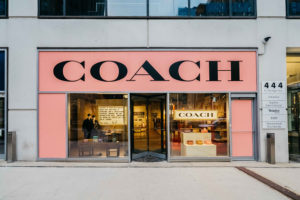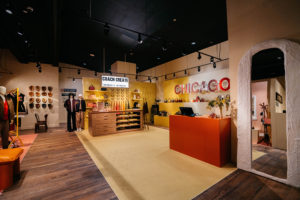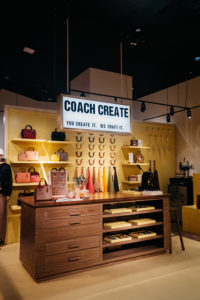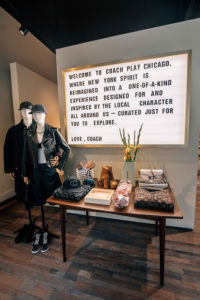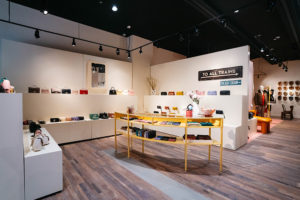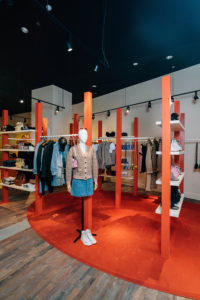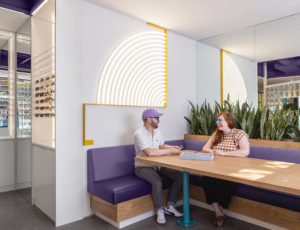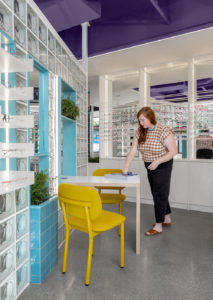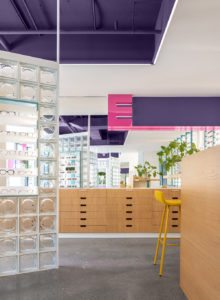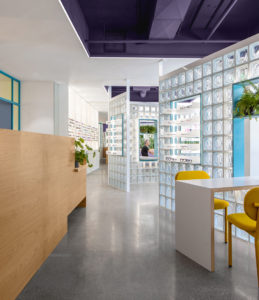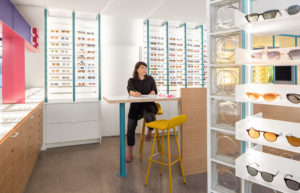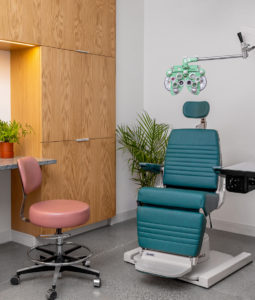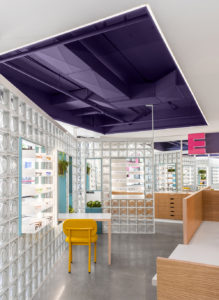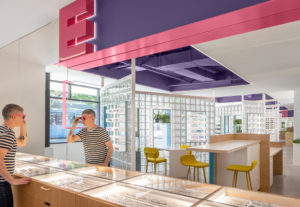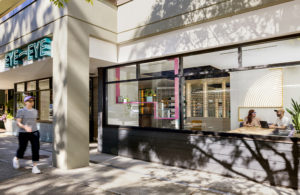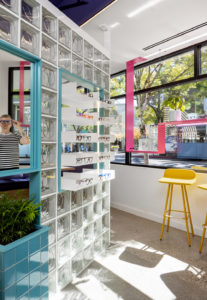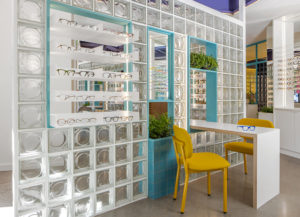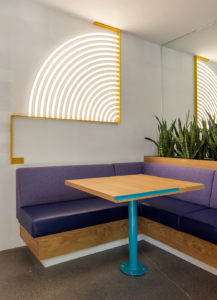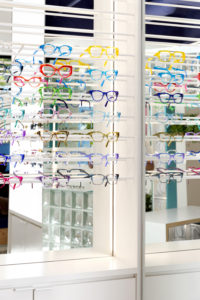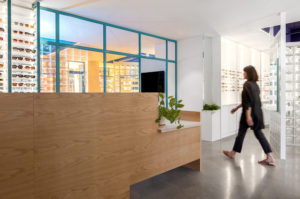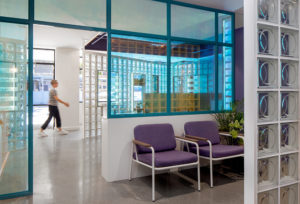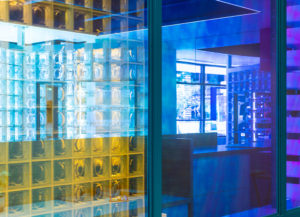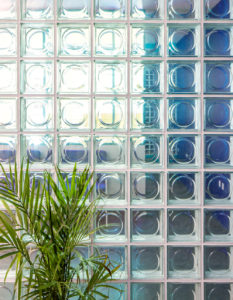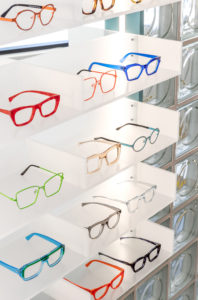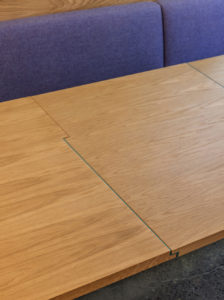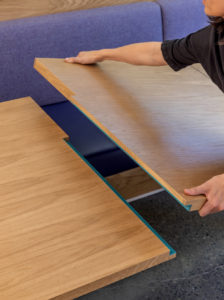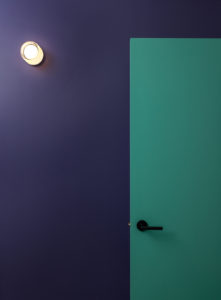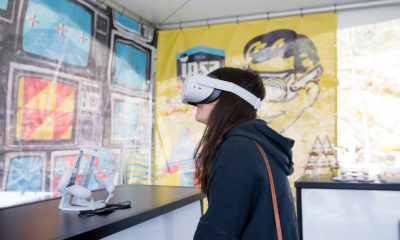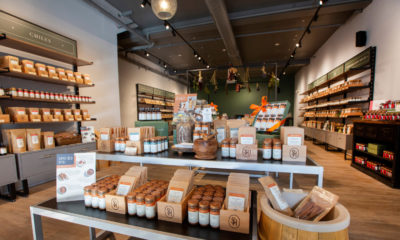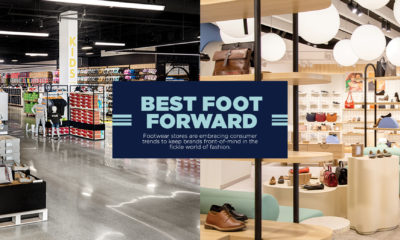A CLOSER LOOK AT Eye Eye (Seattle), an independent eyewear shop founded by Will Pentecost, O.D., reveals a colorful approach to merchandise presentation. His second location in Seattle’s Leschi neighborhood channels the original Capitol Hill location opened in 2015. Pentecost again tapped Best Practice Architecture (Seattle) to create a 1700-square-foot space to showcase fashionable eyewear brands. He gave the creative team free range, but with several requests for this unit – the use of glass block and illuminated signage as well as referencing the design language of the first store.
The new location features a variety of materials, pops of color and custom signage reflecting Eye Eye’s established identity. Bright purple paint and new lighting peek through selectively opened ceilings. Two “E” signs (pink and clear) riff on the Snellen eye chart also found in the Capitol Hill location.
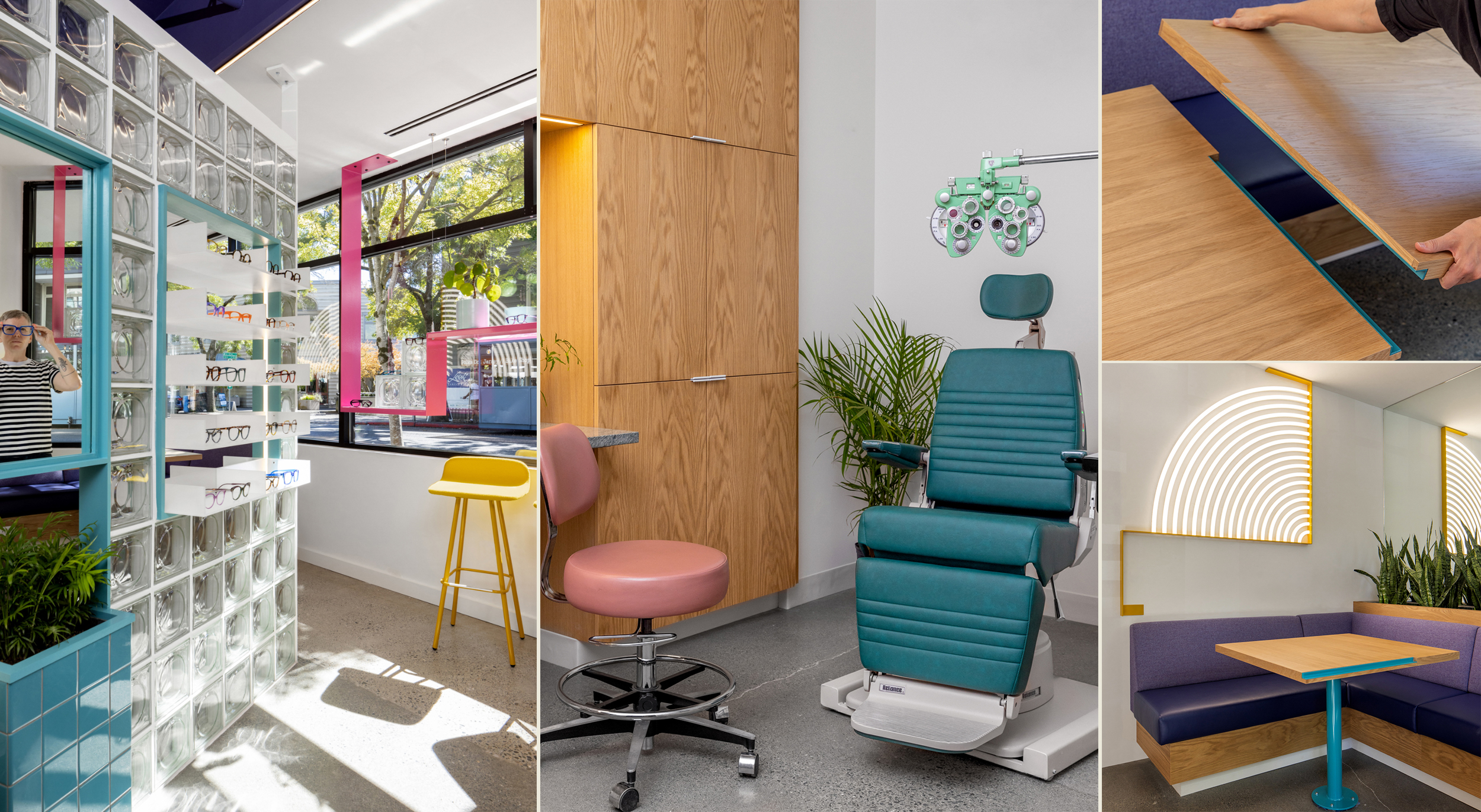 THIS PAGE: The fixtures throughout Eye Eye are meant to be flexible and modular, allowing for easy access to product, in addition to enhancing the overall experience for patients and visitors. 📷 Rafael Soldi, Seattle
THIS PAGE: The fixtures throughout Eye Eye are meant to be flexible and modular, allowing for easy access to product, in addition to enhancing the overall experience for patients and visitors. 📷 Rafael Soldi, Seattle
A warm wood counter-height, locking eyeglass drawer with removable trays found in the first store, presented a next-gen design opportunity. Pentecost wanted more units for the second store with easier, faster access, explains Sarah Smith, RA, Principal, Best Practice Architecture. The reimagined fixture, also redesigned to be more space efficient, features custom routed pulls replacing locks.
The light-filled new store takes full advantage of glass block to form a flexible wall system that enhances circulation and separates Eye Eye’s retail from consultation areas. “The merchandise display (program) was designed with flexibility in mind,” notes Smith.
Glass blocks can be swapped out to accommodate other elements such as a four-by-five block display feature, a two-by-nine block, try-on mirror or a three-by-six block fitting station. Fitting stations, too, were rethought to accommodate a wide range of customers. Individual stations along with a “super” banquette offer café-like seating where patient and optician can comfortably connect.
Advertisement
“The U-shaped banquette is multipurpose,” Smith notes. Two fixed tables can be joined by a custom-fitted middle leaf to form one long seamless surface, perfect for hosting team functions and events.
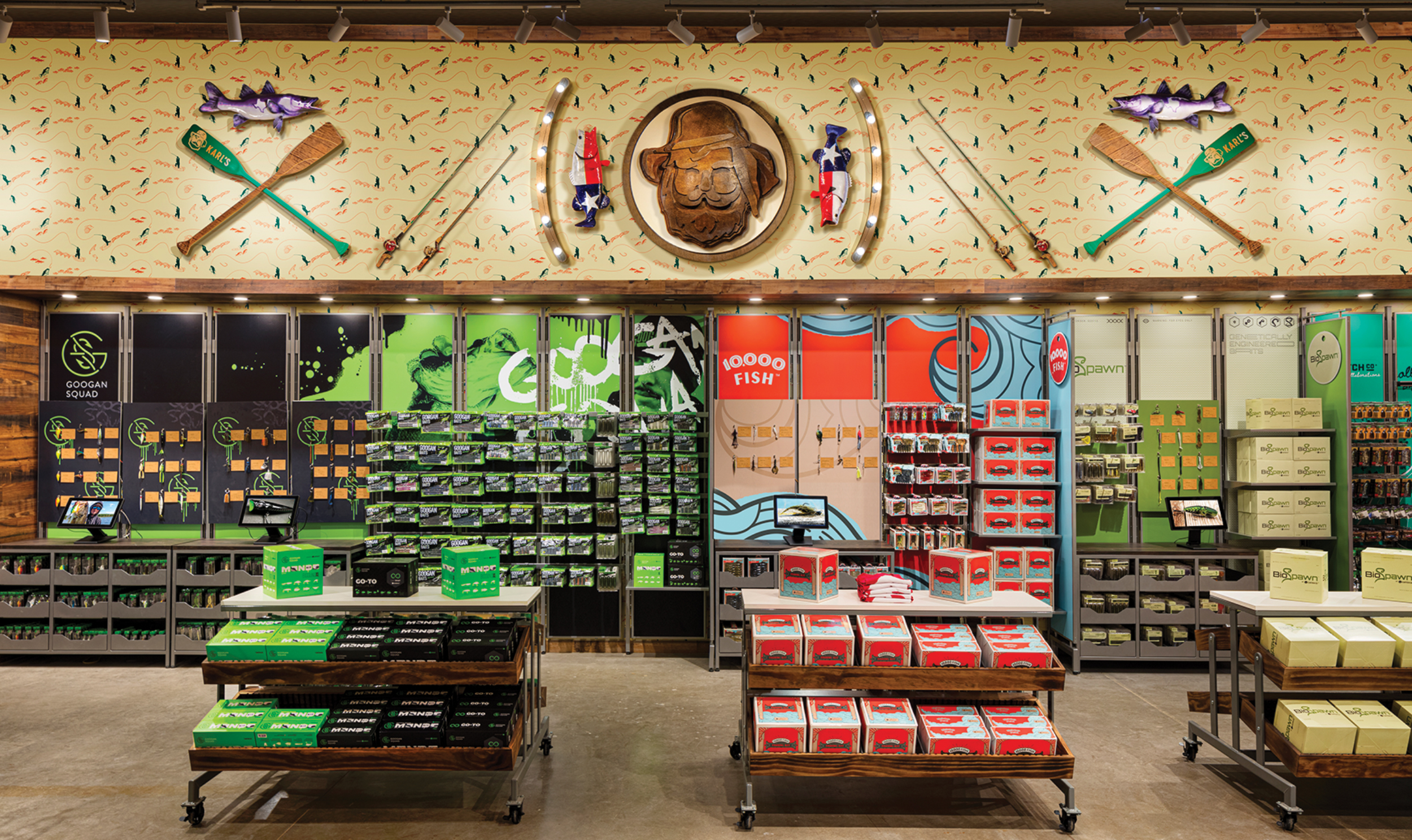 Karl’s fishing & Outdoors 📷 Mark Steele, Columbus, OH
Karl’s fishing & Outdoors 📷 Mark Steele, Columbus, OH
Flexible, Cost Efficient and Personal
New takes on tables and seating, in fact, are popping up in many store formats. For Karl’s Fishing & Outdoors first-ever physical store in Fort Worth, Texas – featured in VMSD’s October 2022 issue – the design team at ChangeUp (Dayton, Ohio), prominently placed a picnic bench to serve as a merchandise fixture and later as a hosting spot for community events. The iconic wooden table is a powerful storyteller as well.
“It harkens back to who they are – a fishing retailer,” says Jamie Cornelius, Executive Creative Director, ChangeUp. The DTC brand is expanding it footprint with a recently opened store in Mall of America.
“We’re seeing brands look more and more for ways to insert their unique DNA into their stores,” Cornelius adds. Teams are getting creative, she says, often mixing standard, semi-custom and custom fixturing to achieve a certain aesthetic and contain costs.
For Karl’s, plywood and paint transform fixturing into eye-catching memorable moments as seen in the cashwrap. And digital features allow customers to self-discover, Cornelius continues, “The lure wall we designed for Karl’s features unboxed lures that shoppers can pick up to trigger a video that shows how to use the bait, and what it looks like in the water.”
Advertisement
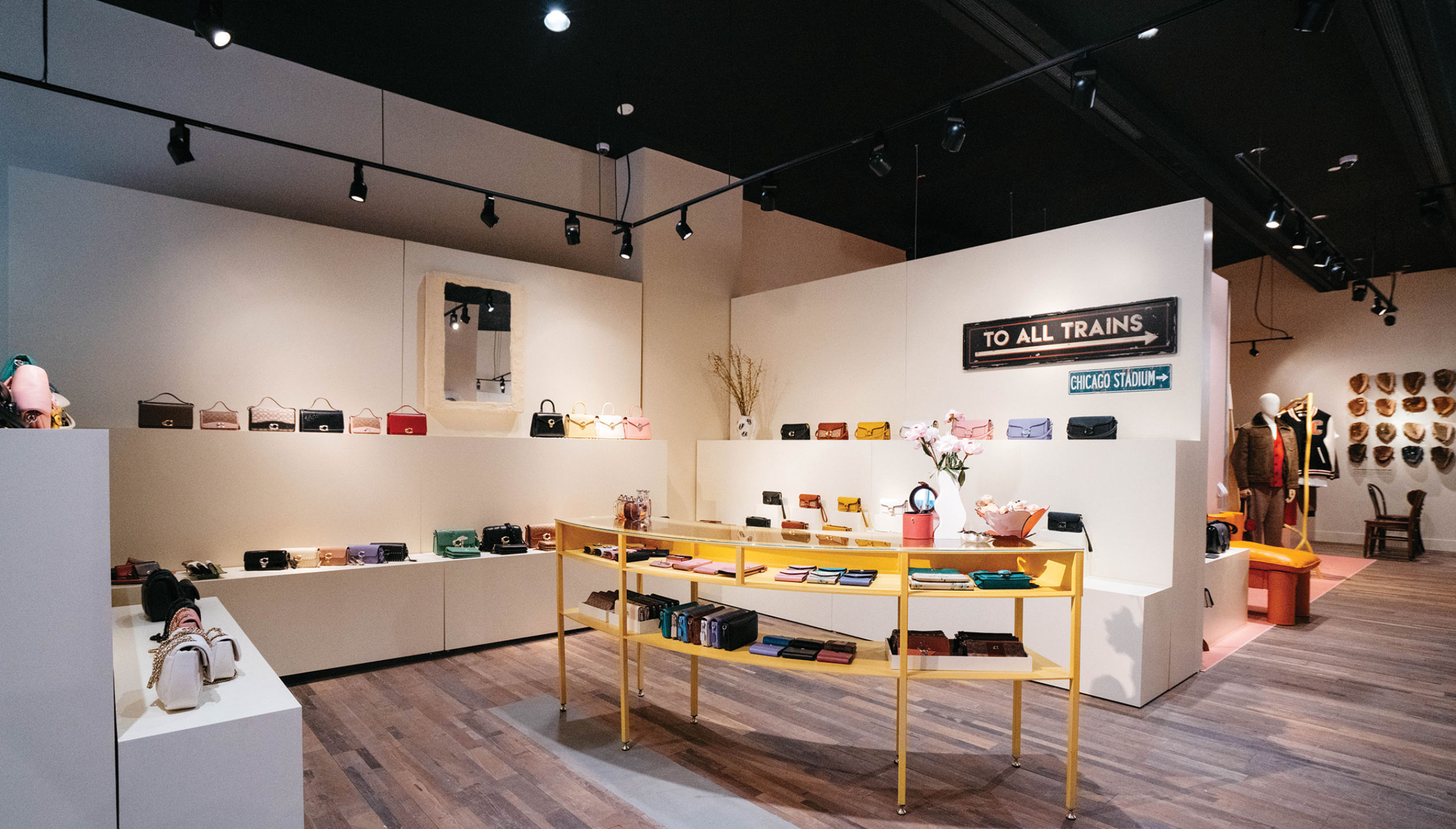 Coach play, Chicago
Coach play, Chicago
“Self-discovery” is a theme that fashion retailers such as Coach (New York) are embracing among other trends. For its 3000-square-foot store in Chicago’s River North neighborhood, Coach Play incorporates locally recognizable street signs, a baseball glove art installation and marquee signs displaying locally relevant – and easily updatable – messages. Its fixture program is equally adaptable to handle seasonal merchandise and multiple classifications allowing the floor to flex, says Rachel Harding, Coach’s Senior Manager, Creative Visual Experience. “Our risers are designed on a simple modular system. They come apart and can be reconfigured to accommodate different VM set ups.”
As the Coach Play concept rolls out across the country, the retailer is also banking on personalization. “Coach Create” allows local artists to host workshops where customers can create one-of-a-kind pieces at its craftsmanship bar. Customers can personalize Coach bags with monograms and embellishments as well as special patches and pins exclusive to the location.
“We are finding that co-creation is becoming more and more important to customers when it comes to our in-store environments,” explains Harding. “We wanted to create a personalized experience unique to each customer, so we made a space where customers can customize their products to make a unique one-off bag that reflects their personality.”
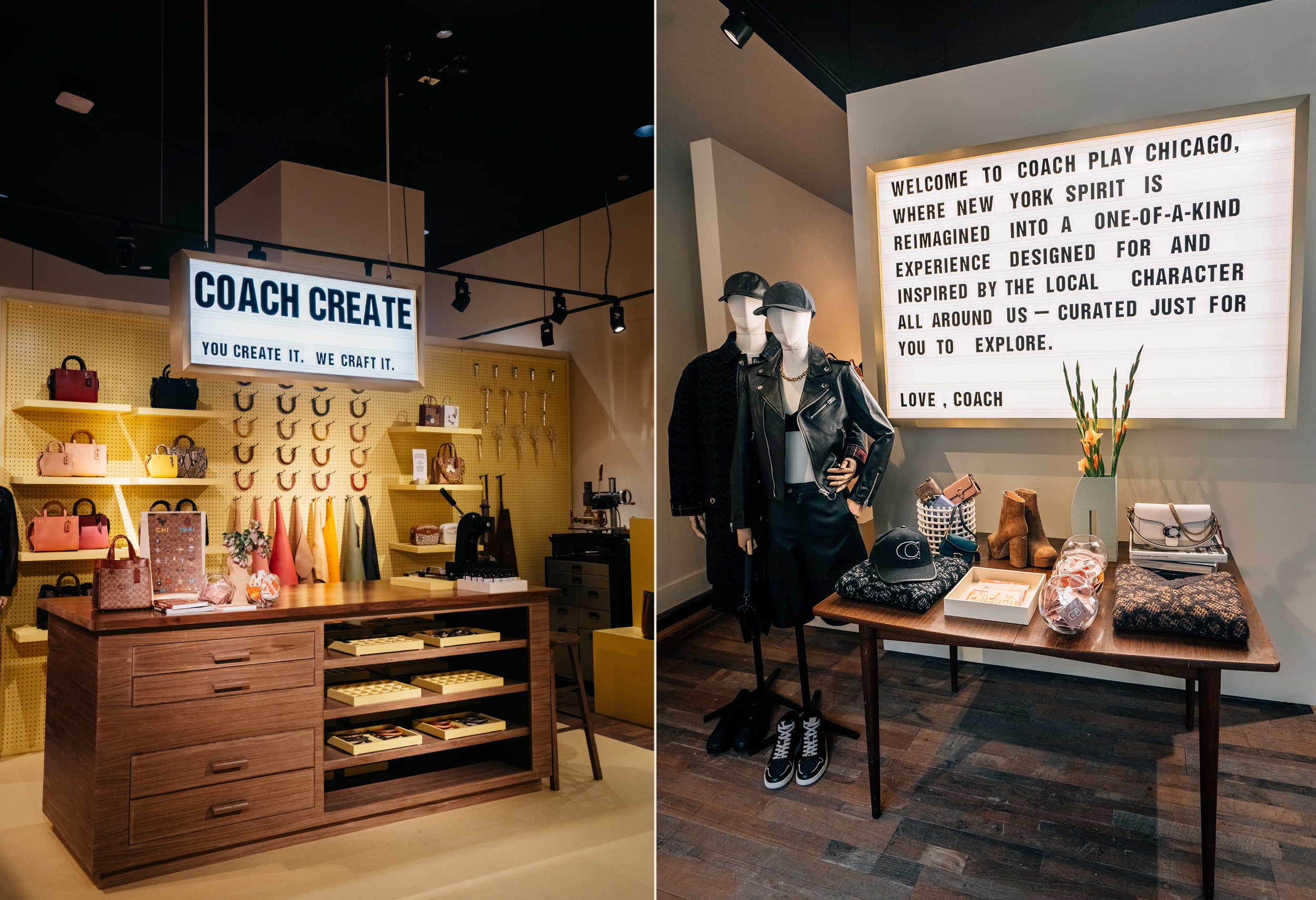 THIS PAGE: Coach Play features personalization and customization opportunities in store, including embellishments unique to each location. 📷 Courtesy of Coach, New York
THIS PAGE: Coach Play features personalization and customization opportunities in store, including embellishments unique to each location. 📷 Courtesy of Coach, New York
Fixturing the Future
Addressing retailers’ need for flexible interiors, designers begin with the store plan to make retail spaces more open. That allows for a variety of fixture types to move in, out or around as merchandise dictates. Mobile, adjustable, reconfigurable fixtures are in demand, though the pandemic era brought about longer lead times for hardware including locks, hinges and drawer guides.
Advertisement
Sustainability concerns are rising. Designers and manufacturers continually investigate ways to contain costs, improve ROI by improving design longevity – namely in choice of materials. Vinyl or bamboo over wood veneer for example.
Says Dana Fleming, Senior Design Director, Big Red Rooster, a JLL company (Columbus, Ohio): “With sustainability continuing to be a top priority, metal is a leading choice when it comes to material – combining flexibility via a wide range of finishes with the durability required for usage in public-facing spaces.”
Look for powdercoating rather than chroming (which contains toxins) to make gains. Adds Fleming, “Color trending neutrals are warming and darkening leaving the cooler grey tones for a more earth-inspired palette.”
PHOTO GALLERY (28 IMAGES)
📷 Rafael Soldi, Seattle | Courtesy of Coach, New York
Advertisement
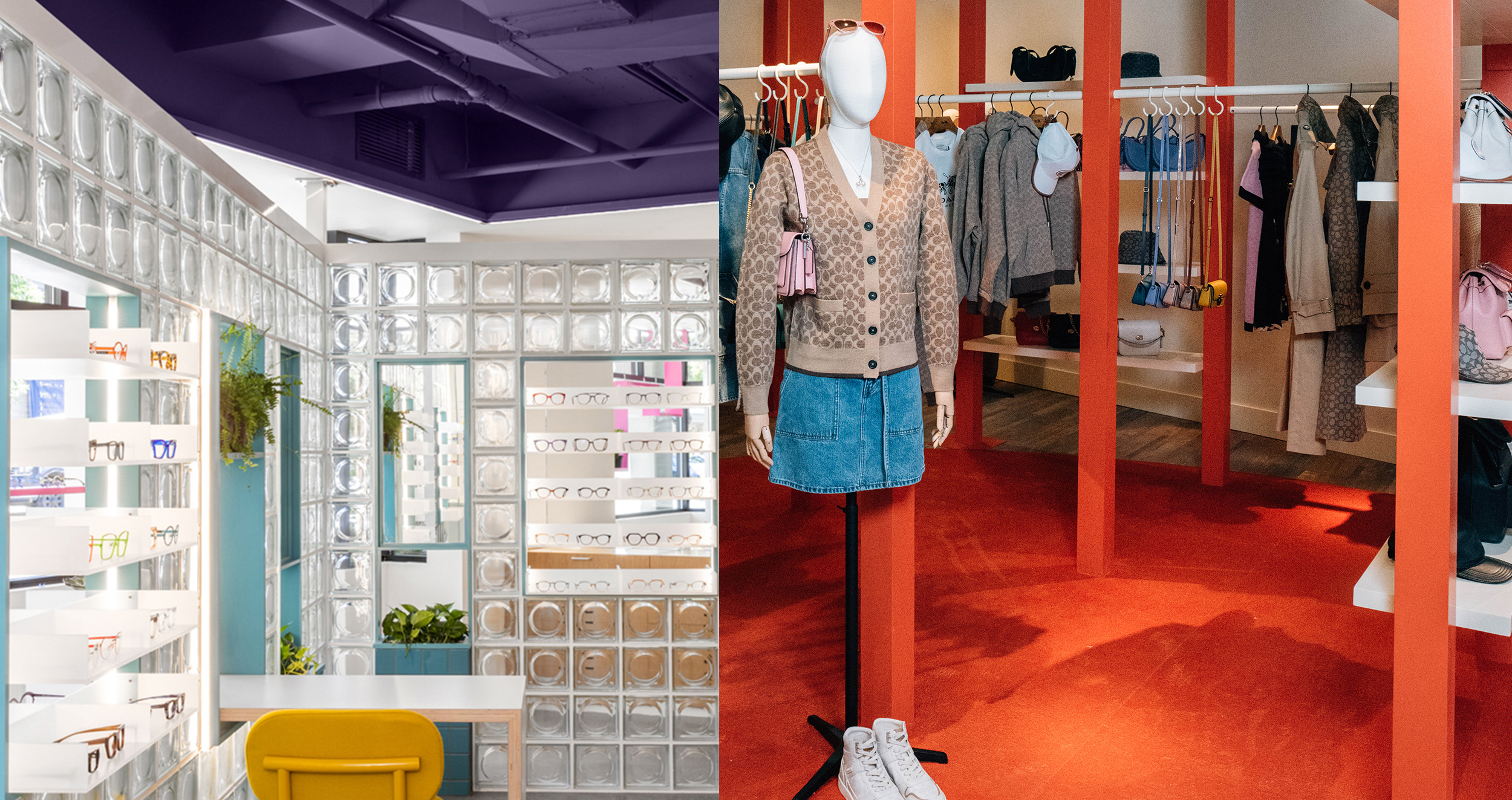

 Photo Gallery2 weeks ago
Photo Gallery2 weeks ago
 Headlines5 days ago
Headlines5 days ago
 Headlines1 week ago
Headlines1 week ago
 Headlines2 weeks ago
Headlines2 weeks ago
 Headlines2 weeks ago
Headlines2 weeks ago
 Headlines4 days ago
Headlines4 days ago
 Headlines3 days ago
Headlines3 days ago
 Designer Dozen1 week ago
Designer Dozen1 week ago

 Karl’s fishing & Outdoors 📷 Mark Steele, Columbus, OH
Karl’s fishing & Outdoors 📷 Mark Steele, Columbus, OH Coach play, Chicago
Coach play, Chicago
